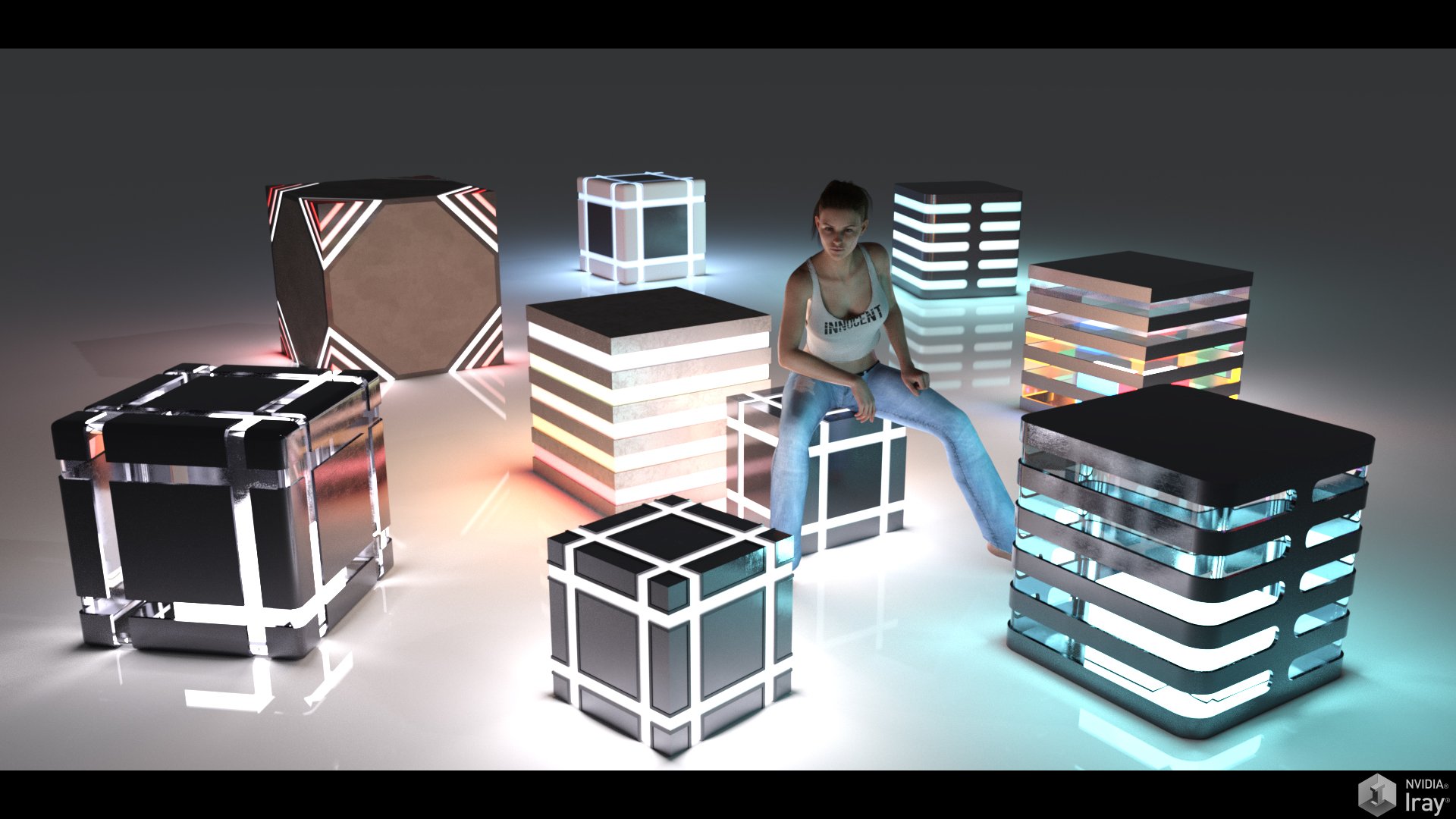

Previously in Carrara, I would render each figure separately and then compose them with various backgrounds in Photoshop. However, since switching to Daz Studio, I am now rendering the entire scene together. The faster rendering speed, simple interface, and great lighting system has allowed me to start doing this fairly quickly. That tutorial shows how a light source such as " morphing laser ball" can have its shape changed using a DAZ Studio D-Former.Rendering the entire scene is best because it allows for more interesting camera angles as well as lighting. What is the refractive index for glass? Changing the shape of light sourcesĪnother spherical light source was used in the DAZ Studio D-Form tool tutorial. The goal was to make the cube look like a block of glass. Unlike the simple sphere in Figure 2, the "diffuse, "ambient", "opacity" and "refraction" settings were altered for the cube.Īnother view of the same "light cube" is shown in Figure 4. Interesting light sourcesįigure 1 shows a similar scene in which the point light source is inside a cube. Upload some of your results to Wikiversity. ActivityĮxperiment with the "diffuse", "specular" and "ambient" channels for some surfaces of objects. In panel D the diffuse channel was set to 0%, leaving only the coherent "mirror-like" reflections. The ambient channel can often be used to help brighten parts of objects in scenes that do not have good illumination.

In Figure 2, panel C, the color for the "ambient" channel was changed from white to black. Changing the ratio of diffuse and "mirror-like" reflectivity
Daz glowing inside object software#
Also note that "mirror-like" reflections can only be rendered using DAZ Studio's software rendering, not the hardware-based rendering options. Note that when you use "mirror-like" reflections, the rendering time increases significantly. ActivityĬreate a simple scene in DAZ Studio and experiment with setting the "reflection" channel for some objects above 0%. For panels B-D the "reflection" channel of the floor and wall panes was set to 100%. For panels B-D a second point light source was added at the same position to increase the available light. The illumination provided by a point source drops off rapidly with distance from the source. All the light in this scene comes from a point light source positioned at the center of the sphere and set to intensity of 200%. Panel A shows the appearance of a wall and floor made using default settings for panes made using the Create>Primitive command in DAZ Studio. However, if you want to render a coherent reflection (such as a person's reflection in a mirror) you need to make use of the "reflection" controls in the "Advanced" settings for Surfaces.įigure 2 illustrates some results obtained by changing the settings for the "reflection", "diffuse" and "ambient" channels for the surfaces of the walls and floor in the scene. DAZ Studio allows you to control three channels ("diffuse", "specular" and "ambient") allow the rendering process to quickly simulate reflection of light from most surfaces. Materials can be selective in terms of which colors (wavelengths) of light they reflect. When we see objects that reflect light, the color of the reflected light depends both on the color of the light falling on the object and the material of the object. With diffuse reflection, the surface of the object scatters the reflected light in many different directions.

If there is mostly diffuse reflection then the directions of reflected photons are not consistent with the original directions of the photons that fell on the surface and it is not possible to obtain an image or coherent view (what we typically call a "reflection") of the original light source from the reflected photons. If there is a large amount of specular reflection then the organization and coherence of the original light falling on the object is retained in the reflected light. The distinction is in the organization of the reflected light that leaves the surface. In terms of physics, there is a distinction between Diffuse reflection and Specular reflection. The name "reflection channel" is somewhat misleading because the "diffuse", "specular" and "ambient" channels also allow objects in the scene to be rendered as they would appear because of reflecting light. For this example, the surfaces of the walls and floor were set to have the reflection channel set to 100%. The human figure and the cat have surfaces for which the reflection channel is set to 0%. The human figure and cat are from the 3D Starter Pack. There are two other types of objects in the scene, those with no "mirror-like" reflectivity and those with "mirror-like" reflectivity. Figure 1 shows an example of a scene that has a single light source, a glowing cube.
Daz glowing inside object how to#
This tutorial covers both the use of light sources and examples of how to alter the surface properties of objects to change how they appear when exposed to light sources.


 0 kommentar(er)
0 kommentar(er)
